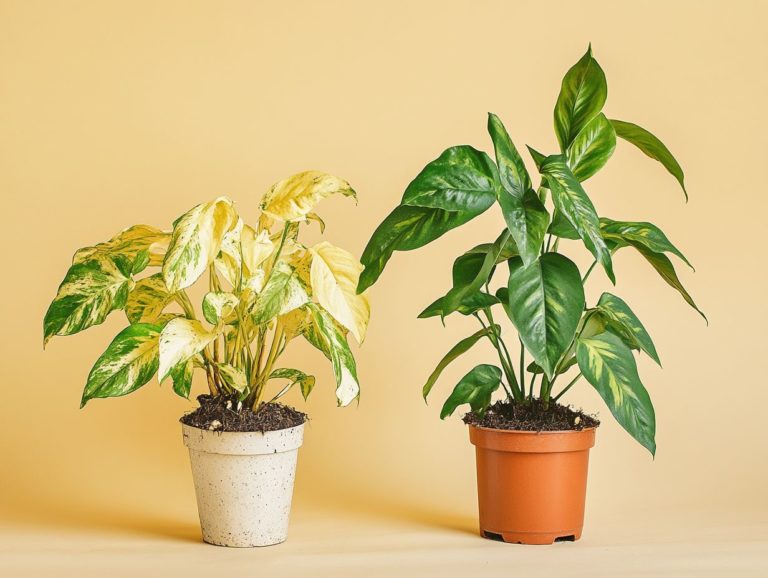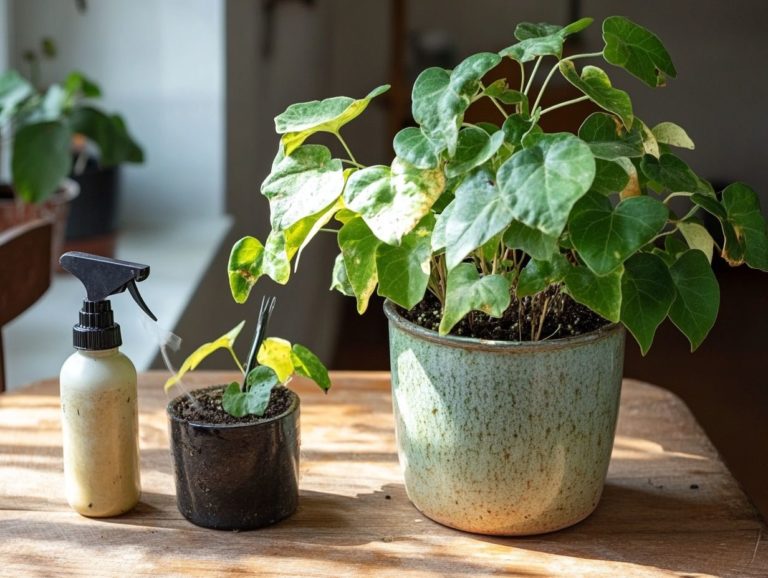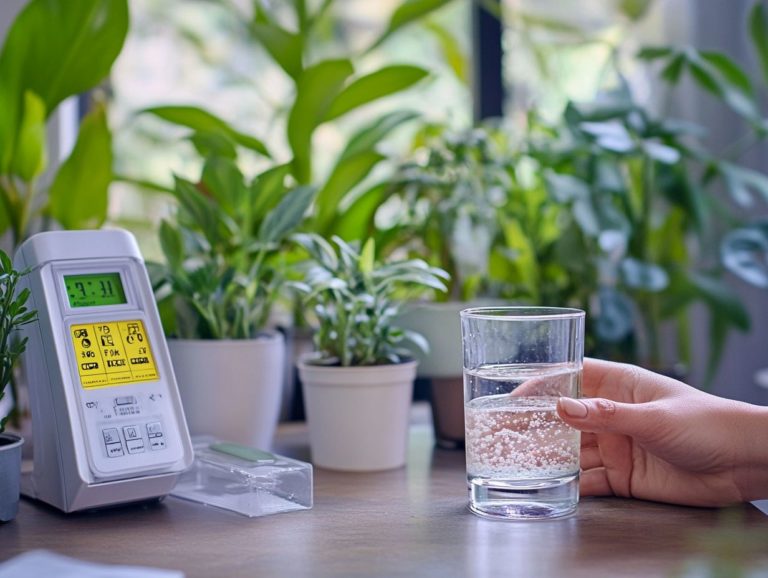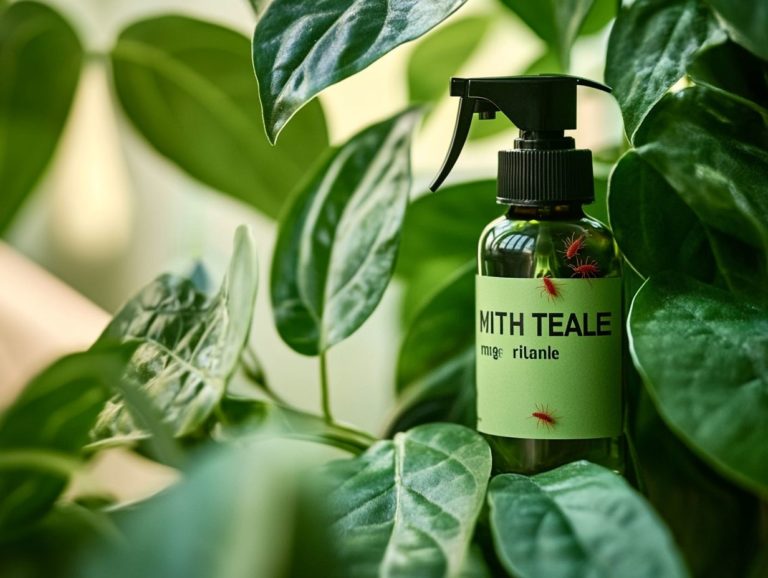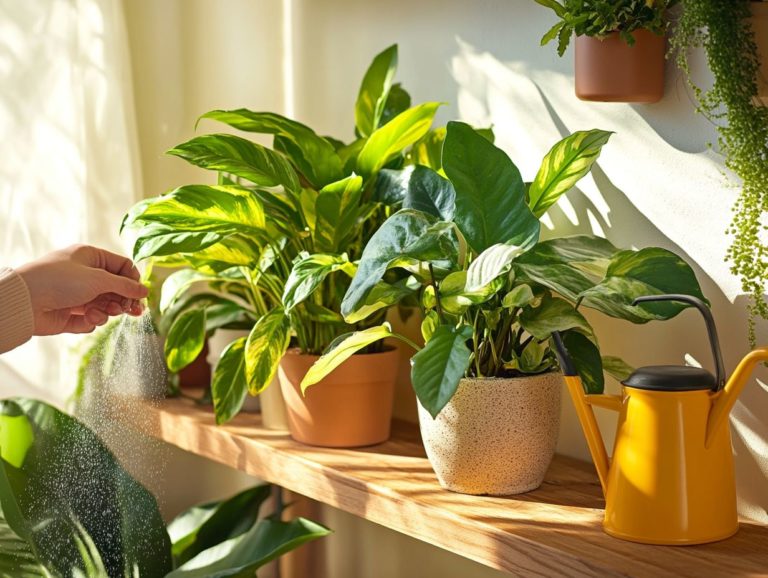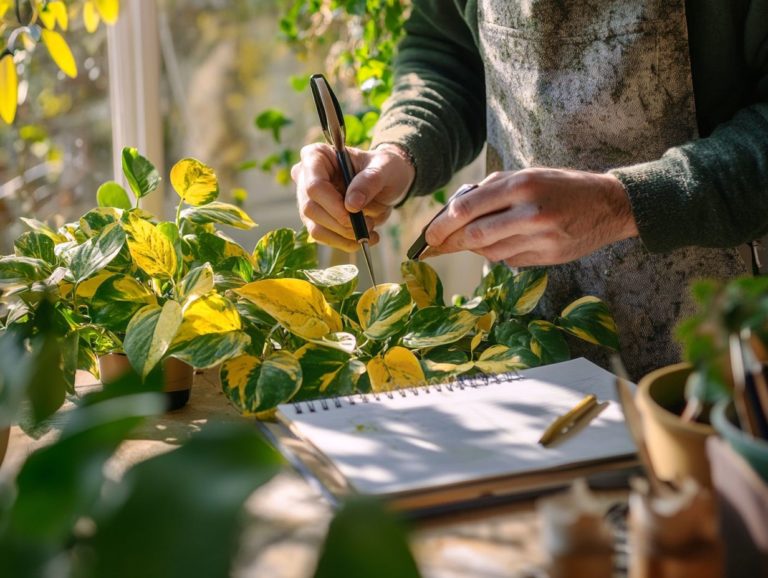When to Worry About Your Indoor Plant
Indoor plants can infuse vitality and elegance into any space. However, they often present unique challenges.
From pests and diseases to subtle signs of distress that may escape your notice, understanding your plant’s needs is essential for maintaining their health and vibrancy. This guide offers insights into common issues, visual indicators of distress, effective solutions, and proactive measures.
It also highlights when it s wise to consult professionals to ensure your plants flourish. Immerse yourself in this journey to become a more confident indoor gardener.
Contents
- Key Takeaways:
- Common Indoor Plant Issues
- Signs of Plant Distress
- Addressing Plant Problems
- Preventing Future Plant Issues
- Understanding Indoor Plant Care
- When to Seek Professional Help
- Frequently Asked Questions
- When should I start worrying about my indoor plant’s health and common issues?
- What are some signs that my indoor plants need immediate attention and pest control?
- How often should I check on my indoor plants for plant health?
- What can I do to prevent my indoor plants from getting sick and maintain healthy plants?
- Should I be worried if my indoor plants experience leaf drop?
- Can I save my indoor plants if they look like they’re dying?
Key Takeaways:
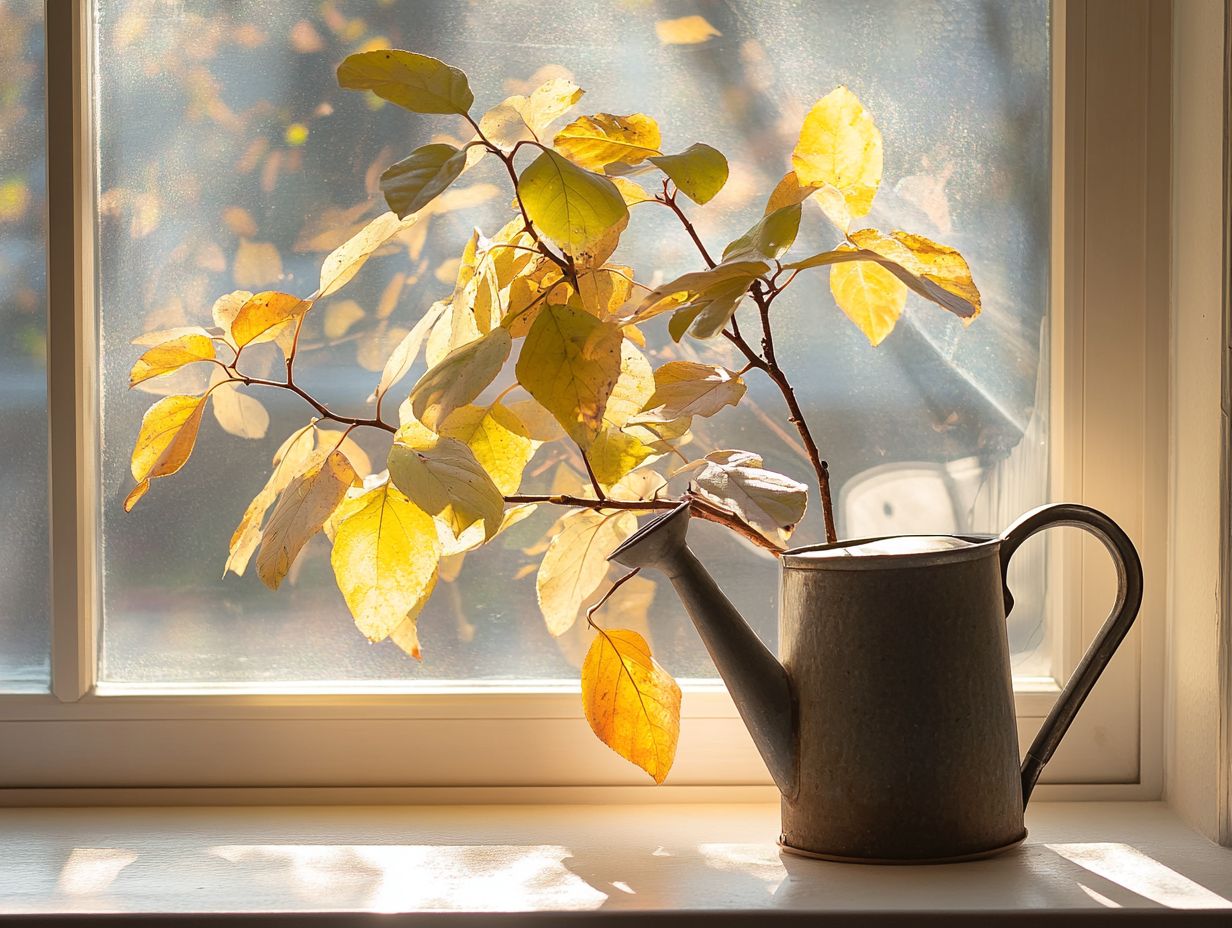
- Regularly check for pests and diseases in your indoor plants to prevent potential issues.
- Pay attention to visual cues and changes in your plants’ behavior, as they can indicate distress or health problems.
- Effective solutions and treatments for plant issues include proper watering, pruning, and using natural remedies.
Common Indoor Plant Issues
Indoor gardeners often face a range of challenges that can impede the health of their houseplants. Spotting issues like yellowing leaves, brown tips, and wilting foliage keeps your plants thriving!
Various factors can contribute to these problems, including overwatering, insufficient sunlight, incorrect humidity levels, and pesky pest infestations. Being aware of common plant diseases, like root rot a condition where the plant’s roots decay due to too much water and powdery mildew, as well as pest nuisances such as aphids and spider mites, is essential for effective maintenance of your indoor plants.
By incorporating care tips from experts like Sydney Price and David McKinney, you can significantly elevate your indoor environment and ensure your plants thrive.
Pests and Diseases
Pests and diseases pose threats to your indoor plants. Aphids and spider mites can lead to leaf drop and stunted growth.
Common culprits such as mealybugs and whiteflies might invade your houseplants, causing yellowing leaves and leaving behind a sticky residue on surfaces. Fungal infections can appear as brown spots or powdery mildew, both of which can severely compromise your plants’ vitality. Act fast! Catching issues early can save your plants.
To tackle these problems, consider using natural insecticides like neem oil, which suffocates pests without harming beneficial insects. Implementing preventative measures like maintaining proper humidity levels and regularly cleaning the leaves can greatly reduce the risk of infestations, ensuring your indoor plants thrive and remain vibrant.
Signs of Plant Distress
Recognizing the signs of plant distress is essential for every indoor gardener. The visual cues your plants display can reveal underlying issues, such as inadequate light or an improper watering schedule.
Pay close attention to the foliage. For instance, yellowing leaves often signal overwatering, indicating too much water is suffocating the roots. Brown tips might point to low humidity levels or insufficient air circulation. Furthermore, wilting leaves can indicate water stress or nutrient deficiencies.
Regularly monitoring your plants is vital to ensure their health and vitality and to address any emerging plant problems.
Visual Cues and Changes in Plant Behavior

Visual cues like leaf drop and leaf spots are essential for spotting plant stress.
They serve as indicators to help you take quick action to revive your indoor plants.
Understanding these signals is essential, as they often reveal underlying issues like insufficient watering, or a lack of nutrients, and pest infestations.
For example, yellowing leaves might indicate your plant isn t getting enough nitrogen, while browning tips could suggest inconsistent moisture levels.
By observing your plants carefully, you can pinpoint the exact problems and foster a deeper connection with them.
To address these stress signals effectively, consider adjusting your watering schedule, providing balanced fertilizers, or even repotting to improve drainage and ensure optimal soil health.
Maintain optimal conditions to promote healthy, vibrant foliage that enhances the aesthetic appeal of your space.
Addressing Plant Problems
Successfully tackling plant problems demands effective solutions tailored to the specific challenges your indoor plants face.
Key strategies involve fine-tuning your watering schedule, enhancing soil health, and selecting the right fertilizers to foster vigorous growth.
When your plants encounter issues like root rot or lack of nutrients, implementing precise interventions can revive their vitality.
Secure their long-term health to ensure they remain part of your flourishing indoor environment.
Effective Solutions and Treatments
Effective solutions for your indoor plants encompass a diverse array of strategies tailored to their specific needs.
Adjusting humidity and ensuring the right light exposure are key factors in fostering robust growth.
Implementing natural remedies can significantly enhance both the resilience and aesthetic appeal of your plants.
For example, using compost tea nourishes the soil and promotes beneficial microorganisms essential for healthy growth.
Incorporating gardening practices like proper pruning and adequate spacing improves air circulation, reducing the likelihood of fungal diseases.
In environments with low humidity, misting your plants or using pebble trays creates a favorable atmosphere, especially for tropical varieties.
Understanding how these elements interact enables you to cultivate a thriving indoor garden filled with houseplants.
Start observing your plants today, and watch them thrive!
Preventing Future Plant Issues
Preventing future plant issues relies on your proactive commitment to nurturing healthy plants.
Pay close attention to care tips and implement sound gardening practices to set yourself up for success.
Establish a consistent watering schedule, monitor humidity levels, and choose the right soil.
These essential steps can significantly diminish the risk of common problems like pests and diseases.
Make plant maintenance a priority! Use strategies from seasoned plant experts to create a vibrant indoor garden.
Understanding Indoor Plant Care
Tips for Maintaining Healthy Indoor Plants

Maintaining healthy indoor plants requires you to have a solid grasp of their specific needs, including a consistent watering schedule, the right light exposure, and adequate air circulation.
Understanding that different species have varying light requirements is essential. For example, while some plants thrive in bright, indirect sunlight, others prefer shadier spots to avoid leaf scorch. To optimize growth, make it a habit to regularly rotate your plants, ensuring even light distribution. This can enhance their overall health.
Consider incorporating a moisture meter to monitor soil humidity, helping you avoid the common pitfall of overwatering. By establishing a routine that embraces these practices, you ll be well on your way to cultivating a vibrant green space, where your plants not only survive but truly flourish in all their glory.
When to Seek Professional Help
Understanding when to seek professional help can be important in rescuing a struggling plant from the brink of despair. This is particularly true in cases of severe pest infestations or diseases. If you are trying different remedies for persistent issues like root rot (which is when roots decay due to excess moisture) or unyielding pests, yet your plant’s condition continues to deteriorate, it may be time to consult with plant experts for their invaluable insight.
It s important to recognize signs that mean your plant needs expert help. This is essential for preserving its vitality and cultivating a thriving indoor garden.
Signs That Your Plant Needs Expert Attention
Certain signs can signal that your plant may need expert help, such as persistent pest infestations, rapid leaf drop, or significant discoloration that hints at underlying plant problems.
When a plant shows these symptoms, it s vital for you to recognize that your usual home care strategies might not be enough. For example, if leaves are wilting despite your careful watering, or if black spots mar the foliage, these issues could indicate diseases that require specialized treatment.
A lack of growth or stunted development can often point to problems like root rot or nutrient deficiencies, which may necessitate professional diagnostics. Timely intervention is crucial; don’t wait! Overlooking these warning signs can lead to more severe damage or even the complete loss of your beloved houseplants.
Knowing when to seek help can be the difference between saving your treasured greenery and watching it fade away.
Frequently Asked Questions
When should I start worrying about my indoor plant’s health and common issues?
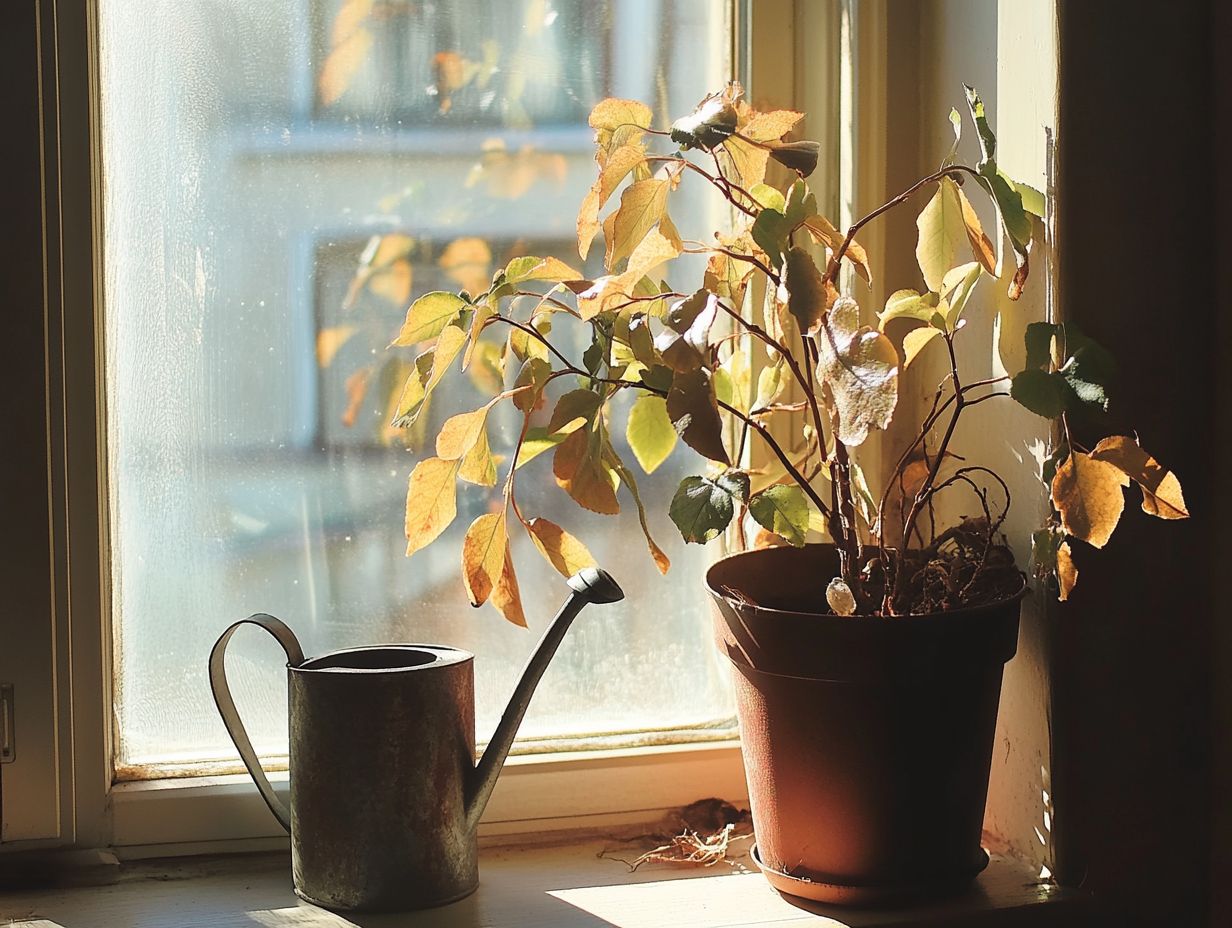
You should start worrying about your indoor plant’s health if you notice any changes in its appearance or growth, such as yellow leaves, wilting leaves, or stunted growth.
What are some signs that my indoor plants need immediate attention and pest control?
If your indoor plant’s leaves are turning brown tips or crispy, or if you notice any pests or diseases on the plant, it is important to take action immediately to save your plant.
How often should I check on my indoor plants for plant health?
It is recommended to check on your indoor plants at least once a week, especially considering factors like humidity levels and light exposure. If you notice any changes or issues, it is important to check on them more frequently.
What can I do to prevent my indoor plants from getting sick and maintain healthy plants?
To prevent your indoor plants from getting sick, make sure to provide them with proper sunlight, keep a consistent watering schedule, and ensure good air circulation while keeping them away from drafts and extreme temperatures.
Should I be worried if my indoor plants experience leaf drop?
It is normal for indoor plants to experience leaf drop, especially during seasonal changes. However, if your plants are dropping a significant amount of leaves, it could be a sign of plant stress or an underlying issue.
Start checking your indoor plants today to keep them thriving!
Can I save my indoor plants if they look like they’re dying?
You can save your indoor plants if they appear to be dying. First, identify the issue, such as overwatering, which means giving your plants too much water, or common pests.
Act quickly to fix the problem. With the right care, your plants can bounce back and thrive again!

